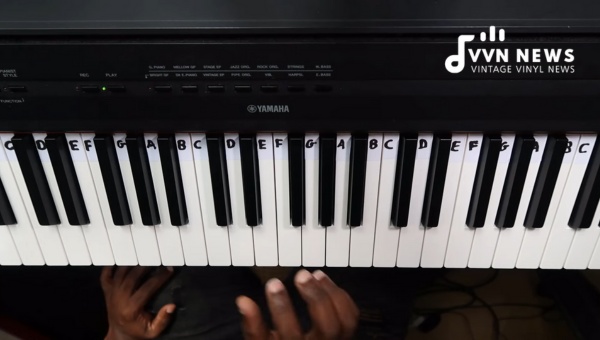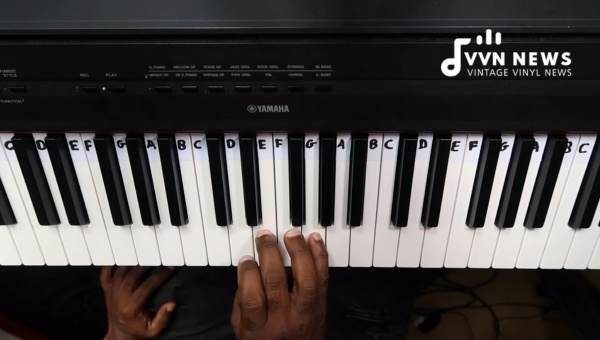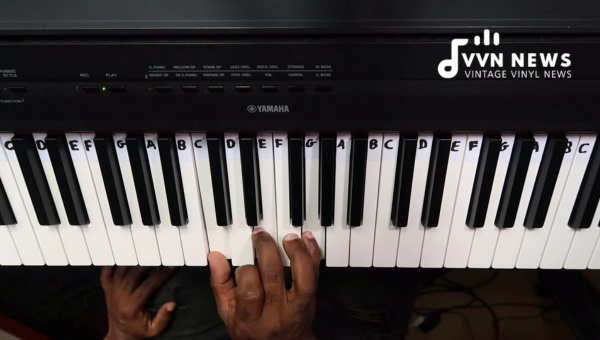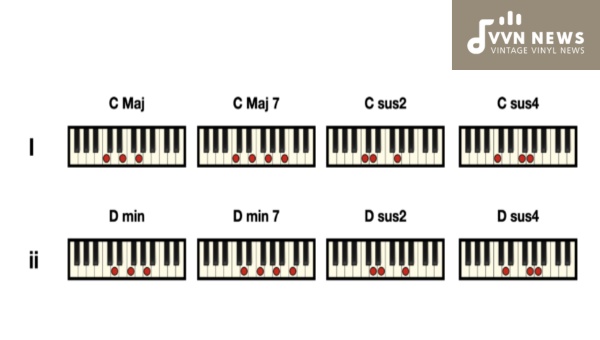When the topic of music theory springs to mind, thoughts may quickly turn to the somewhat intimidating realm of sharp notes, flat notes, keys, and scales.
Yet, I can readily assure you that the world of musical theory is not as fearsome as it might first appear.
A perfect place to begin this musical journey is by uncovering the soothing strains of the chords in C major.
As we delve into this intriguing subject, you’ll discover that no complicated jargon is required to unlock these musical mysteries.
While intricacies undoubtedly exist within this domain, fundamental knowledge will serve you well during your foray into this beautiful world of harmony and melody.
Interest in chords in C major arises from a desire to create your blends or deepen your appreciation for the music around you; rest assured – clarity awaits your enthusiastic pursuit.
What are Chords?
In the realm of music, chords are the building blocks that create harmony and give depth to melodies.
They are formed by playing multiple notes simultaneously. These notes in a chord work together to produce a particular sound or emotional effect.
Chords are made up of three or more pitches played together and can be constructed in various ways, depending on the musical context.
Chords are often represented by symbols such as C, Am, and G7, which indicate the root note (the starting pitch), and additional notes that create the desired tonal quality. For example, a C major chord is comprised of the notes C, E, and G.
Chords are crucial for musicians as they form the foundation of music composition and songwriting.
By combining different chords in unique progressions, musicians can create diverse moods and capture listeners’ attention.
Importance of Chords in Music Composition

Chords are a fundamental element of music composition, playing a vital role in shaping the harmonies, emotions, and overall structure of a piece.
Here are several reasons why chords are crucial to music composition:
Establishing Tonal Center
Chords help establish the tonal center or key of a composition. Each key has its own unique set of chords that provide a sense of stability and cohesion.
By choosing chords within a specific key, composers can create melodies and harmonies that reinforce the tonal center and give the music a distinct character.
Also Read: B Flat Major Chords [Master This Essential Guitar Skill]
Creating Harmonic Progressions
Chords allow composers to create harmonic progressions, which are sequences of chords that provide movement and tension in a piece.
These progressions can create different emotional effects depending on the chord choices and their arrangement.
For example, a series of chords moving from C major to F major might evoke a feeling of resolution or calmness.
Evoking Emotion
Chords have the power to evoke specific emotions in listeners. Different chord qualities such as major, minor, diminished, or augmented can convey different moods or feelings.
For instance, major chords often sound bright and happy, while minor chords tend to sound sad or melancholic.
Adding Depth and Texture
Incorporating chords into compositions adds depth and texture to the music by providing harmony beneath the melody.
By layering chords with different voicings and inversions, composers can create rich and nuanced sounds that enhance the overall musical experience.
Enhancing Expressiveness
Chord progressions allow musicians to add expressive elements to their compositions by manipulating harmonic tension and release.
Dissonant chord progressions build up tension that can be resolved with consonant progressions, creating a satisfying sense of release for listeners.
Supporting Melodies
Chords provide a solid foundation for melodies to rest upon. Melodies often incorporate notes from the underlying chords, creating a harmonious relationship between the two elements of a composition.
Facilitating Transitions
Chords help facilitate smooth transitions between different sections or parts of a composition.
Composers can use specific chord progressions to seamlessly connect contrasting musical ideas, enhancing the overall flow and coherence of the piece.
Chords are essential in music composition as they establish tonal centers, create harmonic progressions, evoke emotions, add depth and texture, enhance expressiveness, support melodies, and facilitate transitions.
By utilizing chords effectively, composers can craft captivating and engaging musical works.
Also Read: D Minor Chords [Step By Step Guide For Guitarists]
C Major Characteristics & Features
C major is a key that is widely used in various genres of music due to its bright and vibrant tonal qualities.
The characteristics and features specific to C major can help musicians utilize it effectively in their compositions. Here are some important details about C major:
Structure of C Major Chord
The fundamental chord in the key of C major is the C major chord, which consists of three notes: C, E, and G.
The root note, C, gives the chord its name. The E and G notes are positioned above the root note at intervals of a major third and a perfect fifth respectively. This structure creates a rich and balanced sound.
Properties specific to C Major
C major is unique among keys due to its particular set of natural notes without any sharps or flats.
The key signature for C major consists of no accidentals (♮) – meaning that only the seven natural notes (C, D, E, F, G, A, B) are used.
The absence of sharps or flats makes it an ideal key for beginners learning music theory or those looking for a fresh sound within their compositions.
Since it contains only white keys on a piano keyboard or open strings on a guitar, finding and playing chords within this key can be relatively straightforward.
Common Chord Progressions in C Major
Chord progressions involve playing chords in sequence to create musical phrases or sections.
In the key of C major, there are several commonly used progressions that musicians can explore:
- I-IV-V: This progression involves playing the chords built on the first (C), fourth (F), and fifth (G) degrees of the scale. It has a strong sense of resolution and is commonly found in many pop, rock, and folk songs.
- ii-V-I: This progression features three chords built on the second (D), fifth (G), and first (C) degrees of the scale. It is often used in jazz and provides a smooth and satisfying sense of resolution.
- vi-IV-I-V: This progression begins with the sixth (A minor) chord, followed by the fourth (F), first (C), and fifth (G) chords. It is frequently found in catchy pop tunes and creates a pleasant and uplifting sound.
These are just a few examples of chord progressions, but there are countless possibilities within the key of C major.
Experimenting with different progressions can help musicians discover their unique musical style.
Also Read: G Sharp Minor Chords [Guitarist’s Guide]
Chord Inversions in C Major
Chord inversions involve rearranging the order of notes within a chord.
This technique adds variety to your playing and can create smoother transitions between chords.
In C major, you can experiment with various inversions to achieve different tonal effects.
For example, instead of playing the C major chord in its root position (C-E-G), you can try playing it in first inversion (E-G-C) or second inversion (G-C-E).
These inversions produce different harmonic textures and can add complexity to your compositions.
Role of Chord Progressions in C Major

Chord progressions are a fundamental aspect of music composition, and they play a significant role in creating the structure and emotional impact of a song.
In the key of C major, utilizing different chord progressions can elevate your musical compositions to new heights.
Let’s delve into the importance and possibilities of chord progressions in C major.
The Basic Chords in C Major
Before we explore chord progressions, let’s familiarize ourselves with the basic chords in the key of C major.
The primary chords in this key are C major (C), D minor (Dm), E minor (Em), F major (F), G major (G), A minor (Am), and B diminished (Bdim).
Building Chord Progressions
A chord progression is a series or sequence of chords played in a specific order.
It provides the harmonic foundation for melodies and helps establish the mood or emotion of a piece.
In C major, you can create various compelling chord progressions by combining different chords.
Also Read: C Sharp Minor Chords [Simple Guide For Aspiring Musicians]
Common Chord Progressions in C Major
- I – IV – V – I:
This progression is one of the most frequently used in music. The I-IV-V-I progression consists of playing the C major (C), F major (F), G major (G), and ending with another C major chord. - II – V – I:
The II-V-I progression involves playing the chords D minor (Dm), G major and finally resolving back to C major. This progression adds color and tension before resolving back to the tonic chord. - vi – IV – I – V
This progression begins with the relative minor chord (A minor) followed by heading to F major (IV), C major (I), and ending with the G major (V) chord. It is a popular progression used in many pop and rock songs. - IV – V – vi – iii
This progression starts with F major, moves to G major, then goes to A minor, and finally ends on the E minor chord. This progression has a more laid-back and mellow feel.
Adding Emotional Depth
Chord progressions can evoke different emotions in listeners. In C major, certain progressions are known for their specific emotional qualities:
- The I-V-vi-IV progression (C-G-Am-F) is often associated with a sense of nostalgia and introspection. It has been used in numerous hit songs across various genres.
- The IV-I-IV-V progression (F-C-F-G) has an uplifting and triumphant quality, making it ideal for creating energetic and positive vibes.
- The vi-V-IV-III progression (Am-G-F-E) brings about a sense of melancholy and longing, making it suitable for heartfelt ballads or emotional pieces.
What is the role of Seventh Chords in C Major?
Seventh chords add an extra layer of complexity and richness to music.
They are formed by stacking intervals of a third on top of each other, creating a four-note chord.
In the key of C major, four seventh chords play a significant role in enhancing the harmonic progression and adding flavor to compositions.
The Major Seventh Chord (Cmaj7)
The major seventh chord denoted as Cmaj7, consists of the root note (C), a major third (E), a perfect fifth (G), and a major seventh (B).
This chord has a smooth and sophisticated sound that can add elegance and jazziness to your compositions.
It is often used as a substitute for the regular C major chord to create more interesting progressions.
The Dominant Seventh Chord (G7)
The dominant seventh chord denoted as G7 is built on the fifth scale degree of C major.
It contains the notes G, B, D, and F. The dominant seventh chord has a strong and tension-filled sound that creates a desire for resolution to the tonic chord (C major).
It is commonly used in blues, jazz, and rock music genres to bring an edgy and bluesy vibe to compositions.
Also Read: B Minor Chords [Maximize Your Musical Skills Today]
The Minor Seventh Chord (Am7)
The minor seventh chord denoted as Am7, consists of the root note A, a minor third (C), a perfect fifth (E), and a minor seventh (G).
This chord has a mellow and introspective quality that can add depth and emotion to your music.
It is often used in ballads or songs with a melancholic atmosphere.
The Half-Diminished Seventh Chord (Bm7♭5)
The half-diminished seventh chord denoted as Bm7♭5, is a chord with a slightly dissonant and unresolved sound.
It is formed by the notes B, D, F, and A. This chord is commonly used in jazz and bossa nova genres to create tension and highlight specific melodic movements.
It can also be used in classical music to evoke a darker or mysterious atmosphere.
Seventh chords play a crucial role in the harmonic progression of a song.
They can be used as substitutes or extensions of basic triads (three-note chords) to create more intricate and interesting chord progressions.
In the key of C major, the seventh chord opens up new possibilities for musical expression.
They add color and complexity to compositions, allowing musicians to explore different tonalities and create unique sounds.
How to Play Chords in C Major on Different Instruments [Piano, Guitar]

When it comes to playing chords in C major, two popular instruments that come to mind are the piano and the guitar.
In this section, I will guide you through the steps of playing chords in C major on both instruments.
Piano:
- Position yourself at the piano with a straight back and relaxed hands.
- Locate the middle C key on your keyboard. It is usually found near the center of the piano.
- The C major chord consists of three notes: C, E, and G. Place your thumb (1st finger) on C, your middle finger (3rd finger) on E, and your pinky (5th finger) on G.
- Press down the keys simultaneously to play the chord firmly but without excessive force.
- To play an inversion or a different voicing of the C major chord, simply rearrange the order of the notes while maintaining their relationship as 1-3-5.
Guitar:
- Begin by the anatomy of your guitar fretboard. The strings are numbered from thickest to thinnest: 6th (low E), 5th (A), 4th (D), 3rd (G), 2nd (B), and 1st (high E).
- Locate the open position for each note in the C major triad: C is played on the 3rd fret of the A string, E is played open on the D string, and G is played open on the B string.
- Place your index finger on the first fret of B string for additional voicing options or move your fingers up or down along the neck to explore higher or lower octaves.
Mastering chords in C major opens up countless possibilities for playing different songs and improvisation in various genres.
Practice transitioning smoothly between chords and experiment with different strumming or fingerpicking patterns to develop your unique style.
Also Read: F Sharp Minor Chords [Music Theory Demystified]
How Chord Inversions can be applied to C Major?
Chord inversions are a valuable tool that musicians use to add variety and interest to their compositions.
By rearranging the order of the notes within a chord, chord inversions create different voicings and harmonic structures while maintaining the same basic chord quality. In this section, we will explore how chord inversions can be applied to chords in C major.
What is a Chord Inversion?
A chord inversion occurs when the root note of a chord is not its lowest note.
Instead, another note from the chord becomes the lowest note, resulting in a different sound and tonal characteristic.
Chord inversions are denoted by numbers that indicate which scale degree is in the bass position.
For example, in its root position, a C major triad consists of the notes C (root), E (third), and G (fifth).
By moving the notes around and placing E or G as the lowest note, we create two different chord inversions – first inversion and second inversion.
First Inversion
In the first inversion chords, the third note of the triad becomes the lowest note.
To create a first inversion of C major, we take E as our bass note instead of C. The resulting chord is represented as C/E.
First inversion chords often have a lighter or more ethereal sound compared to their root positions.
They can be used to add subtle tension or serve as transitional elements within musical progressions.
Second Inversion
Second inversion chords occur when the fifth note of the triad becomes the lowest note.
To form a second inversion of C major, we take G as our bass note instead of C. This particular inversion is represented as C/G.
Second inversion chords provide greater stability due to their strong bass foundation and are commonly used for cadences or resolving dissonant harmonies.
Also Read: Chords In G Flat Major [Essential Guide For Musicians]
Practical Application on Different Instruments
Now that we understand the concept of chord inversions, let’s explore how they can be applied to instruments such as piano and guitar in the key of C major.
Piano
On the piano, playing chord inversions in C major is relatively straightforward.
In its root position, a C major chord consists of playing the notes C, E, and G simultaneously.
To play the first inversion (C/E), simply move the E up one octave, so that it becomes the lowest note played. For the second inversion (C/G), move G up one octave.
Guitar
On the guitar, chord inversions can be achieved by changing finger positions on the fretboard.
For a C major chord in root position on the guitar, place your fingers on frets 3 (A string), 2 (D string), 0 (G string), 1 (B string), and 0 (high E string).
To play a first inversion (C/E), keep your fingers in position but shift your index finger to fret 4 on the B string.
For a second inversion (C/G) on the guitar, slide your fingers up two frets from the first inversion position.
Remember to experiment with different voicings and inversions on your instrument to discover unique sounds and expand your musical creativity.
Chord inversions offer exciting possibilities within chords in C major. By exploring different voicings and rearranging notes, musicians can add depth and color to their compositions.
So go ahead and dive into the world of chord inversions within C major – it’s time to unlock a world of musical possibilities.
Also Read: Mastering Chords In A Minor [Improve Your Composition Skills]
FAQs About Chords In C Major
What are the different types of chords in C major?
In C major, you will encounter major chords, minor chords, diminished chords, and augmented chords, each with its distinct sound and character.
What makes C major unique compared to other keys?
C major is often considered the most accessible key for beginners due to its lack of sharps or flats. It has a bright and cheerful sound that makes it a popular choice for many songs.
How can I create chord progressions in C major?
By combining different chords in a specific order, you can create chord progressions in C major. Exploring common progressions like I-IV-V or vi-IV-I-V can be a great starting point for creating your music.
What role do seventh chords play in C major?
Seventh chords add complexity and color to the music. In C major, you can find dominant seventh, major seventh, and minor seventh chords that provide an additional layer of richness to your compositions.
Can I play chords in C major on different instruments?
Absolutely! Whether you’re playing piano or guitar, mastering chords in C major is essential for any musician. Learning the fingerings and positions on your instrument will enable you to play beautiful harmonies effortlessly.
Conclusion
Mastering chords in C major opens up a world of musical possibilities. In this ultimate guide, we’ve covered the basics of chords, their importance in music composition, and explored the characteristics of C major.
We’ve also discussed chord progressions, the role of seventh chords, and how to play chords in C major on different instruments.
Additionally, we touched upon chord inversions as a way to add variety to your compositions.
By applying these concepts, you’ll be well-equipped to create beautiful and captivating music in the key of C major.
Keep practicing and exploring the fascinating world of chords!








